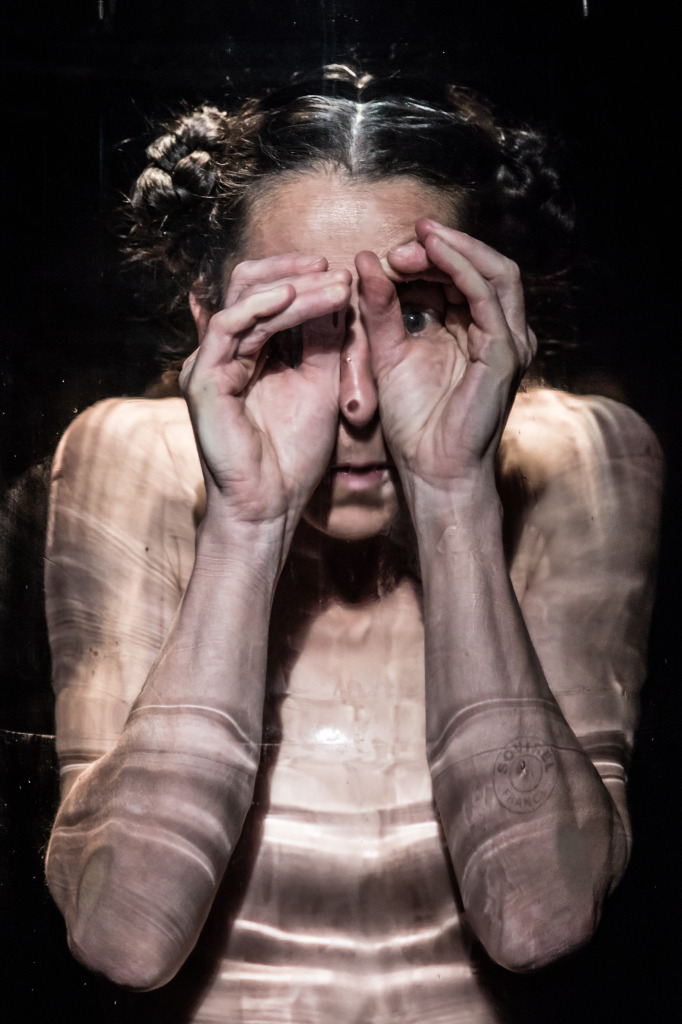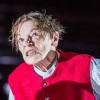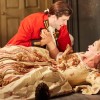d(ARE) / Here Be Lions, The Print Room, W11
reviewed for The Times, 12 June 2015
A thin bell jar hangs low from the ceiling of a darkened studio, swinging almost imperceptibly. A dancer enters. She squats, and begins to sway, mesmeric, beneath the rhythm of the jar.
She seems to have starved herself for us. Her hair in two institutionally plaited buns, her bare breasts shrunken; this is a withered child. Contorting herself, she writhes into the hollow jar from below — digging her fingers deep beneath obscenely visible ribs, she presses her sternum forward against the glass, clambering to the top as if by the use of the two skeletal suction pads of her chest. Lips pressed wordlessly against the bell jar, she transforms from human into laboratory specimen. Sylvia Plath, eat your heart out.
Unfortunately, that’s the high point of d(ARE), the director-writer Stéphane Olry and dancer Sandrine Buring’s bizarre, if noble attempt to give voice to the inner life of mentally handicapped children. Buring’s solo dance performance, and Here Be Lions, Olry’s monologue, both respond to months the pair spent at a French state hospital for children born with incurable neurological disorders.
Olry’s monologue of his experiences, spoken by a game Hayley Carmichael, reveals that Buring experienced far more of a communicative breakthrough in her dance therapy sessions with these mutes than he did wandering around with his notebook: “It’s bodies that understand bodies,” we are told.
So it’s no surprise that Orly’s text — with background screeches by “vocal improviser” Phil Minton — is inchoate and incoherent next to Buring’s dance. Unfortunately, it’s the former we have to listen to for an hour, while Buring’s work is far too brief. Did I mention that we lie in deckchairs, enveloped in fog, just in case we weren’t empathising enough with locked-in syndrome already? Not for the claustrophobic. Or, ironically, the disabled.







